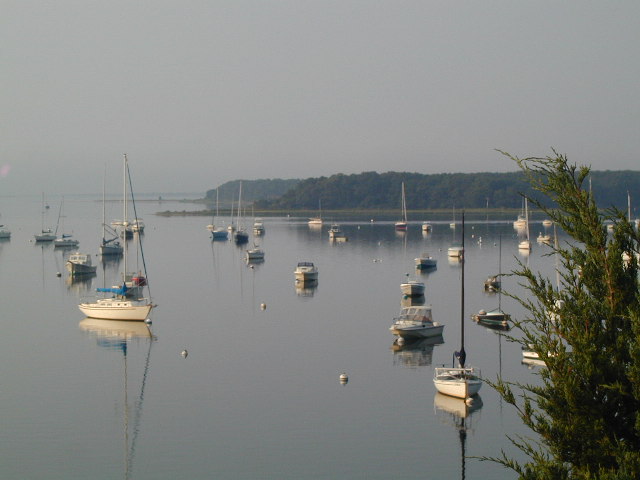Elucidating the role that urbanization of watersheds plays on the taxonomic and functional diversity of estuarine microbial communities.
Arguably the greatest environmental force acting on the coastal ocean is the urbanization of near-shore watersheds across the globe. Currently over 50% of the world’s population lives in urban environments and the United Nations estimates that this will increase to 61% by 2030. In the United States only 20% of the population continues to reside in rural communities and impervious surfaces cover an area approximately the size of Ohio. Considerable evidence suggests that urbanization of landscapes results in demonstrable changes to biodiversity across many trophic levels. Habitat alteration in urban landscapes has resulted in the loss of scores of native plant species and led to declines in their associated fauna. There is evidence for losses of native biodiversity along rural to urban transects in plants, birds, butterflies, and other insects. The effect of increased urban development on adjacent marine systems has received little attention and virtually no work has been done to understand how urbanized lands alter the diversity, structure, and function of near-shore marine microbial communities, despite the host of ecosystem services that they provide. By examining how microbial communities change along an urbanization gradient in both the sediments and water column of marine systems we were able to determine which bacteria are most strongly affected by urbanization and how the overall diversity of the system is altered.
This research took place in Waquoit Bay (Fig. 1), an embayment located on Cape Cod, MA. It is the site of a NOAA funded National Estuarine Research Reserve (WBNERR) and has been used as a natural laboratory for many years because of the range of land uses in the various watersheds of its many subembayments. Among the subembayments is the hyper-eutrophic Childs River estuary, with a nitrogen load of 783 kg N per hectare of estuary surface, primarily derived from onsite disposal of septic wastes. This can be contrasted to Sage Lot Pond, a subembayment on the east side of Waquoit Bay that has a watershed almost entirely in conservation land and receives a nitrogen load of about 11 kg N per hectare of estuary, largely from atmospheric deposition of nitrogen. Thus this system provides a space-for-time substitution of the process of urbanization that is perfect for testing hypotheses regarding the role that urban development plays on the structure and function of marine microbial communities.
Publications associated with this work:
Bowen, J. L., J. M. Ramstack, S. Mazzilli, and I. Valiela. 2007. NLOAD: An interactive, web-based modeling tool to estimate nitrogen loads and concentrations, and explore options for nitrogen management in estuaries. Ecological Applications 17: S17-S30.
Bowen, J. L., K. D. Kroeger, G. Tomasky, W. J. Pabich, M. L. Cole, R. H. Carmichael, and I. Valiela. 2007. A review of land-estuary coupling by ground water discharge: Mechanisms and effects. Applied Geochemistry 22: 175-191.
Bowen, J. L., and I. Valiela. 2004. Nitrogen loads to estuaries: Using loading models to assess the effectiveness of management options to restore estuarine water quality. Estuaries 27: 482-500.
Bowen, J. L., and I. Valiela. 2001. The ecological effects of urbanization of coastal watersheds: Historical increases in nitrogen loads and eutrophication of Waquoit Bay estuaries. Canadian Journal of Fisheries and Aquatic Sciences 58: 1489-1500.
Bowen, J. L., and I. Valiela. 2001. Historical changes in atmospheric nitrogen deposition to Cape Cod, Massachusetts, USA. Atmospheric Environment 35: 1039-1051.